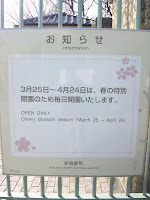

No matter whether you like it or not, the first place you reach in Japan is Chiba, not Tokyo. Chiba is a prefecture located in the Grater Tokyo Area. For those who expected to fly over a bunch of skyscrapers on final approach to Narita (Tokyo International) airport, I’m sorry, that’s totally wrong. All you see outside of your window is numerous rice fields.

Narita is located about 50 miles north east of Tokyo. You’ll be amazed how inconvenient it is to get to the center of Tokyo and probably, how difficult it is to find a person able to speak good English when you really need help or get lost. Anyhow, Chiba is the place where I was born and grew up. The best part of Chiba is its geographic variety and leisure.

First off, Tokyo Disney Resort is the most prominent landmark of Chiba. Although the name has “Tokyo” in it, it’s not located in Tokyo prefecture. Tokyo Disney Resort consists of Tokyo Disney Land, Tokyo Disney SEA, and surrounding facilities and hotels. Tokyo Disney Land is almost similar to Magic Kingdom in Florida, but I personally find Tokyo better in terms of the courtesy, professionalism, and the maintenance although it was built in 1983 long before Hong Kong Disney Land. It might be weird for non-Japanese people to hear the Disney characters speaking Japanese though. Tokyo Disney SEA was built in 2000 if I recall correctly and not a mimic of anything. It has more relaxed and romantic atmosphere, targeted at grown-ups rather than kids. So if you have already been to any other Disney Lands, I would highly recommend visiting Tokyo Disney SEA.
The capital, Chiba-city is on the coast of Tokyo bay, 30 minutes train ride from Tokyo Station.


I went to a high school here and the bay area of the city functions as a sub-capital of Tokyo. As a matter of fact, IBM, BMW, Sharp, Fujitsu, and other well known companies have their Japan headquarters here. Also the place is famous for Makuhari-Messe(World Convention Center), where big conferences and exhibitions(Tokyo Motor Show, Tokyo Game Show) take place. I really hated those events because the train on the way to and back from high school tended to be crowded full of people on the day. The city is well organized and clean unlike other Japanese counterparts, and the Christmas illuminations and night view of skyscrapers are impressive.

The lower part and west side of Chiba is a country side but its land, Tokyo bay, and Pacific ocean provide full of outside activities, vegetables and fruits, and last but not least, fish for sushi and sashimi. Especially, Anago(similar to eel but tastes better) Tempura shown in the picture is awesome.


There are bike roads on the coast of Pacific ocean and Tokyo bay, which allow you to go around the Boso peninsula. My friends and I went to a 4-day road trip of 300 miles all the way. Chiba is also a popular place to surf because of the constant high wave of the Pacific Ocean and relatively warm climate in the area.
Overall, Chiba is a perfect place for me to live in with variety of things to have fun, good food, closeness to Tokyo, and Narita airport giving me an easy access to the U.S. and other countries. I would be happy if you keep in mind that you are in Chiba when you get to Japan.
Naoki Wada


 Although it is a peaceful and happy occasion, ohanami can also be considered bittersweet due to the fact that the beauty of the cherry blossoms fades so quickly. For this reason, cherry blossoms can be very symbolic in Japanese culture, and are representative of the Japanese aesthetic concept of mono no aware: the deep feeling that Japanese people tend to have for tragically short-lived things.
Although it is a peaceful and happy occasion, ohanami can also be considered bittersweet due to the fact that the beauty of the cherry blossoms fades so quickly. For this reason, cherry blossoms can be very symbolic in Japanese culture, and are representative of the Japanese aesthetic concept of mono no aware: the deep feeling that Japanese people tend to have for tragically short-lived things. But with that said, the Japanese can take ohanami very seriously, and most of the best spots for viewing the cherry blossoms are taken in the early hours of the morning. Make sure you wake up early if you decide you’d like to take part so you can reserve your own spot!
But with that said, the Japanese can take ohanami very seriously, and most of the best spots for viewing the cherry blossoms are taken in the early hours of the morning. Make sure you wake up early if you decide you’d like to take part so you can reserve your own spot! Ohanami is going on in Japan right now. Special thanks to JSA’s Senior Advisor Fukashi Iiyama for taking these pictures!
Ohanami is going on in Japan right now. Special thanks to JSA’s Senior Advisor Fukashi Iiyama for taking these pictures!









